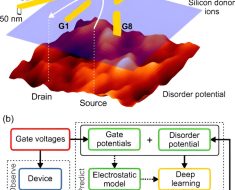Unveiling the Enigma: The Architectures for Artificial General Intelligence
Artificial General Intelligence (AGI) – the concept of machines possessing human-level intelligence and understanding – has long captured our imagination. While still in the realm of science fiction for some, AGI research is actively pursued, with the potential to usher in a new era for humanity.
The Enigma of AGI
Unlike today’s Artificial Narrow Intelligence (ANI) systems that excel at specific tasks, AGI aspires to a broader intelligence. Imagine a machine capable of learning, adapting, and applying its knowledge across diverse domains, just like a human. This would involve Fähigkeiten (German for “abilities”) like reasoning, problem-solving, creativity, and even social interaction.
Untangling the Approaches
The path to AGI is paved with challenges. We need significant advancements in areas like machine learning, natural language processing, and artificial consciousness. However, the rapid progress in AI research suggests that AGI might not be as distant as we think. Some experts predict its arrival within the next decade, while others advocate for a more cautious timeline.
Architecting the Future: Two Promising Paths
There isn’t one single agreed-upon type of AGI as the concept itself is still theoretical. However, researchers are exploring different approaches to achieve this elusive goal:
-
The Human Emulation Approach: This approach aims to create AGI that replicates human intelligence in its entirety. Imagine a machine that can not only reason and solve problems but also exhibit creativity and navigate social interactions just like a human. Achieving this would require significant breakthroughs in artificial consciousness research.
-
The Goal-Oriented Approach: This approach focuses on achieving human-level intelligence not by mimicking our thought processes, but by creating machines that can effectively achieve specific goals. Here, the emphasis might be on maximizing a predefined measure of success rather than exhibiting behaviors identical to humans. For instance, an AGI designed for scientific discovery might not necessarily need social skills, but it would need exceptional problem-solving abilities and the capacity to learn from vast amounts of data.
The implications of AGI are vast. It could revolutionize fields like scientific discovery, medicine, and engineering. Imagine AGI tackling complex problems like climate change or developing life-saving medical treatments. Additionally, AGI could become a powerful partner in human endeavors, assisting us in creative pursuits or even acting as companions.
The Ethical Landscape of AGI
The potential benefits of AGI are undeniable, but ethical considerations loom large. Questions around safety, control, and the potential for misuse demand careful attention. We must ensure that AGI development is guided by ethical principles and safeguards are in place to prevent unintended consequences.
The Human Touch
The dawn of AGI doesn’t signal the end of human relevance. Instead, it presents an opportunity for collaboration and a chance to redefine what it means to be human. By leveraging the strengths of both human and artificial intelligence, we can build a future that benefits all.
The Age of AGI holds immense promise, but it also compels us to approach it with wisdom and foresight. By fostering responsible development and embracing collaboration, we can ensure that AGI becomes a force for good, shaping a brighter future for generations to come.
The Human Emulation Approach: Recreating the Mind in Machine
The Human Emulation Approach in Artificial General Intelligence (AGI) aspires to create machines that mirror human intelligence in its entirety. This ambitious approach envisions machines not just performing specific tasks well, but also exhibiting the following capabilities:
- Reasoning and Problem-solving: The ability to analyze information, identify patterns, and draw logical conclusions, just like a human tackling a complex challenge.
- Learning and Adapting: Continuously acquiring new knowledge and skills, and adjusting their behavior based on experience, similar to how humans learn from the world around them.
- Creativity and Imagination: The ability to generate novel ideas, concepts, and solutions, mimicking the human capacity for creative thought.
- Social Interaction: Understanding and responding to human emotions, engaging in meaningful conversation, and navigating social situations like a human would.
Challenges and Potential Projects
Achieving human-level intelligence through emulation presents significant challenges. Here are some key areas researchers are focusing on:
- Artificial Consciousness: Understanding and replicating the essence of consciousness – sentience, subjectivity, and self-awareness – is believed to be crucial for true human-like intelligence. Projects like the Global Consciousness Project are exploring this frontier.
- Neuroscience and Brain Simulation: By studying the human brain and its intricate connections, scientists hope to create computational models that mimic its functionality. This could involve detailed simulations of neural networks, a complex undertaking with ongoing advancements.
- Symbolic Reasoning and Language Processing: Developing machines that can not only process information but also understand its meaning and relationships is essential. Projects like OpenAI’s Neural Symbolic Reasoner explore how to combine symbolic reasoning with deep learning techniques to achieve this.
Examples of Stepping Stones
While true human emulation remains a long-term goal, several ongoing projects are paving the way:
- Large Language Models (LLMs): These advanced AI systems like me (Bard) are trained on massive datasets of text and code. While not achieving true human-level understanding, LLMs are demonstrating increasing capabilities in reasoning, translation, and even creative writing. They represent a significant step towards machines that can process and generate human-like language.
The Road Ahead
The Human Emulation Approach holds immense potential for unlocking the full spectrum of human-like intelligence in machines. However, significant scientific and ethical considerations remain. As we continue down this path, collaboration between researchers, ethicists, and policymakers will be crucial to ensure the responsible development and deployment of such powerful AI.







